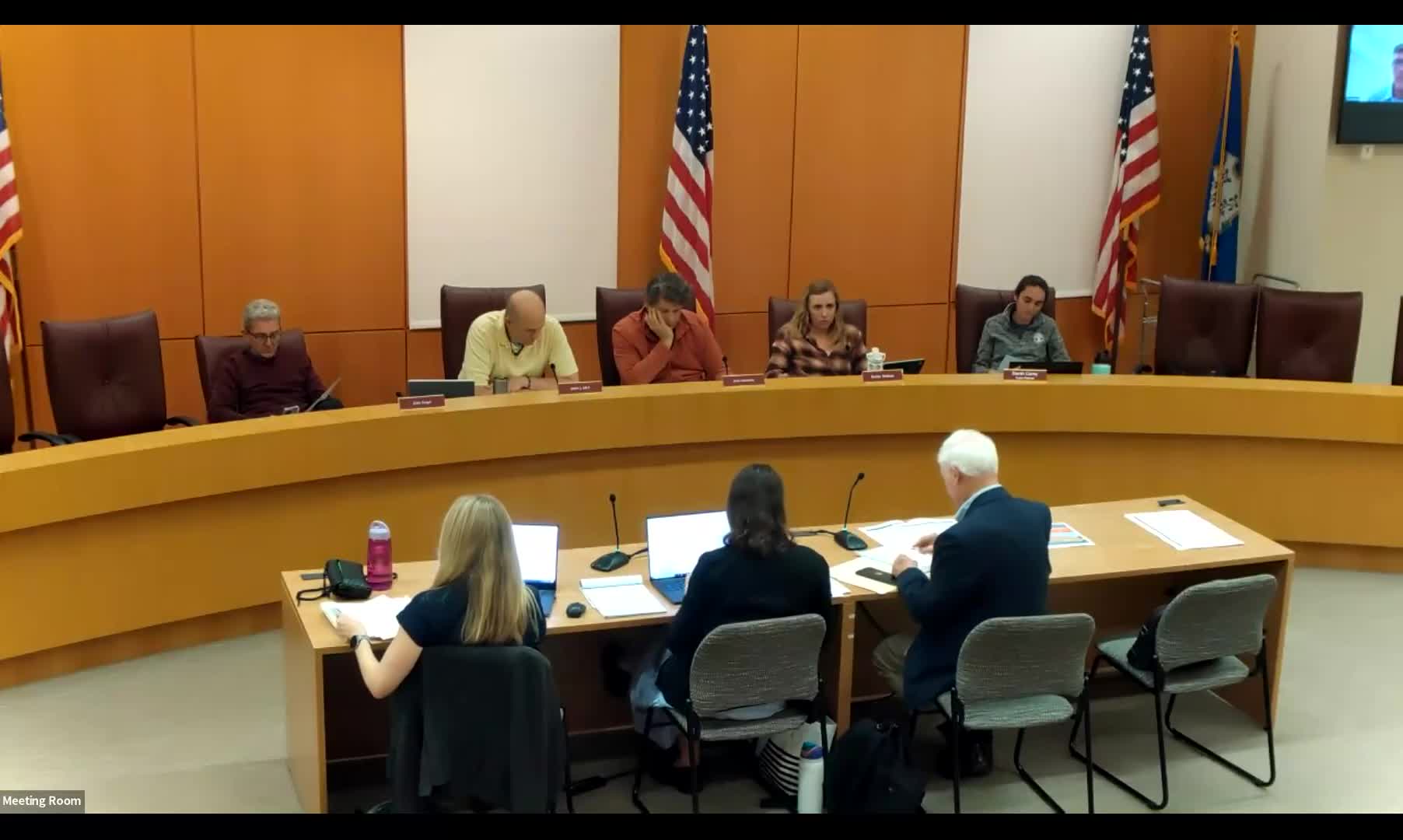Consultants outline section-by-section code review; commission pushes to address business zones and controversial topics early
October 09, 2025 | New Canaan, Fairfield, Connecticut
This article was created by AI summarizing key points discussed. AI makes mistakes, so for full details and context, please refer to the video of the full meeting. Please report any errors so we can fix them. Report an error »

Consultants from BFJ presented a project approach to the subcommittee on Oct. 8 that organizes the zoning revision as a sequence of focused meetings, each with a deliverable. Suzanne Goldberg said the consultants “thought it made the most sense to go section by section” so the subcommittee can receive an analysis and recommended changes for each area of the code.
BFJ proposed three major subcommittee meetings ahead of the draft-text milestone: (1) business zones and basic standards (landscaping, site standards that apply across zones); (2) residential zones, special zones and affordable housing; and (3) finalizing definitions, procedures and appendices. Commissioners discussed sequencing: several members recommended moving inclusionary housing and incentive-zoning topics into the business-zones meeting, because most of the town’s affordable housing currently is allowed in business zones and because discussions about inclusionary zoning would otherwise force cross-references across meetings.
Commissioners emphasized early attention to topics likely to generate strong public reaction — for example, form-based code concepts, transit-oriented development, clustering of density, and institutional uses. Several commissioners asked that the consultants frame technical terms (for example, “form-based code” and “transit-oriented development”) plainly in the workshop materials so members of the public understand the options being discussed. One commissioner suggested scheduling controversial topics earlier in the process because those topics often draw sustained public interest and can carry over to subsequent meetings.
BFJ said the proposed approach is ambitious but consistent with its contract timetable: the initial public workshop in October, an online survey in winter (January–February), a second public workshop in late March to review draft text/map revisions, and final adoption steps running through the following months. The consultants committed to circulating draft materials before each subcommittee meeting so commissioners can review and provide substantive feedback rather than crafting text live during meetings.
Why it matters: The sequence and structure of the review will determine how the subcommittee evaluates cross-cutting issues (for example, affordable housing incentives that depend on business-zone rules), how much time is devoted to contentious topics, and when the public sees draft regulatory text.
Ending: BFJ will move inclusionary zoning material earlier in the meeting sequence per the commission’s request and will circulate a revised meeting plan and materials for review prior to the Oct. 23 workshop.
BFJ proposed three major subcommittee meetings ahead of the draft-text milestone: (1) business zones and basic standards (landscaping, site standards that apply across zones); (2) residential zones, special zones and affordable housing; and (3) finalizing definitions, procedures and appendices. Commissioners discussed sequencing: several members recommended moving inclusionary housing and incentive-zoning topics into the business-zones meeting, because most of the town’s affordable housing currently is allowed in business zones and because discussions about inclusionary zoning would otherwise force cross-references across meetings.
Commissioners emphasized early attention to topics likely to generate strong public reaction — for example, form-based code concepts, transit-oriented development, clustering of density, and institutional uses. Several commissioners asked that the consultants frame technical terms (for example, “form-based code” and “transit-oriented development”) plainly in the workshop materials so members of the public understand the options being discussed. One commissioner suggested scheduling controversial topics earlier in the process because those topics often draw sustained public interest and can carry over to subsequent meetings.
BFJ said the proposed approach is ambitious but consistent with its contract timetable: the initial public workshop in October, an online survey in winter (January–February), a second public workshop in late March to review draft text/map revisions, and final adoption steps running through the following months. The consultants committed to circulating draft materials before each subcommittee meeting so commissioners can review and provide substantive feedback rather than crafting text live during meetings.
Why it matters: The sequence and structure of the review will determine how the subcommittee evaluates cross-cutting issues (for example, affordable housing incentives that depend on business-zone rules), how much time is devoted to contentious topics, and when the public sees draft regulatory text.
Ending: BFJ will move inclusionary zoning material earlier in the meeting sequence per the commission’s request and will circulate a revised meeting plan and materials for review prior to the Oct. 23 workshop.
View the Full Meeting & All Its Details
This article offers just a summary. Unlock complete video, transcripts, and insights as a Founder Member.
✓
Watch full, unedited meeting videos
✓
Search every word spoken in unlimited transcripts
✓
AI summaries & real-time alerts (all government levels)
✓
Permanent access to expanding government content
30-day money-back guarantee

